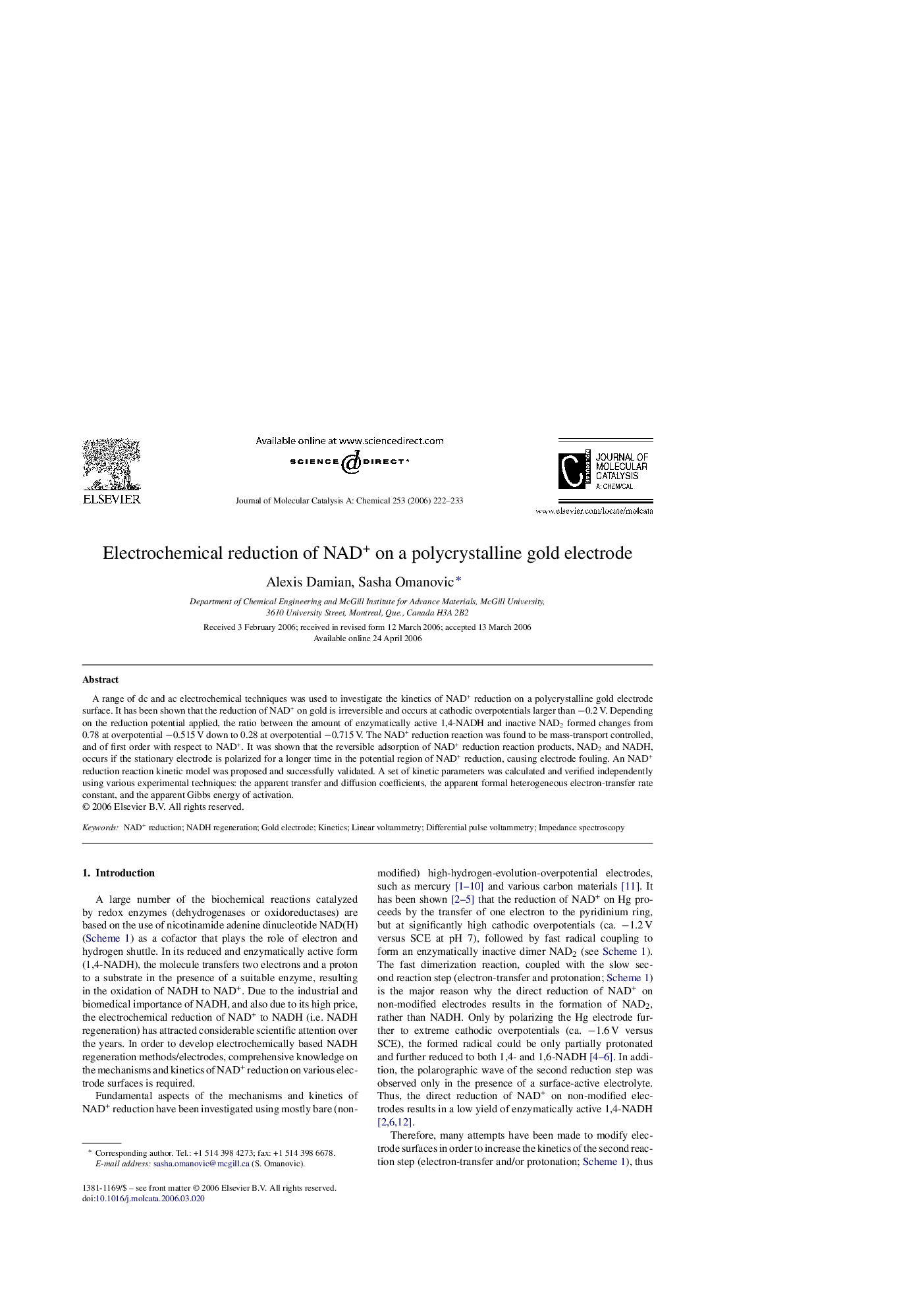| کد مقاله | کد نشریه | سال انتشار | مقاله انگلیسی | نسخه تمام متن |
|---|---|---|---|---|
| 68947 | 48526 | 2006 | 12 صفحه PDF | دانلود رایگان |

A range of dc and ac electrochemical techniques was used to investigate the kinetics of NAD+ reduction on a polycrystalline gold electrode surface. It has been shown that the reduction of NAD+ on gold is irreversible and occurs at cathodic overpotentials larger than −0.2 V. Depending on the reduction potential applied, the ratio between the amount of enzymatically active 1,4-NADH and inactive NAD2 formed changes from 0.78 at overpotential −0.515 V down to 0.28 at overpotential −0.715 V. The NAD+ reduction reaction was found to be mass-transport controlled, and of first order with respect to NAD+. It was shown that the reversible adsorption of NAD+ reduction reaction products, NAD2 and NADH, occurs if the stationary electrode is polarized for a longer time in the potential region of NAD+ reduction, causing electrode fouling. An NAD+ reduction reaction kinetic model was proposed and successfully validated. A set of kinetic parameters was calculated and verified independently using various experimental techniques: the apparent transfer and diffusion coefficients, the apparent formal heterogeneous electron-transfer rate constant, and the apparent Gibbs energy of activation.
The reduction of NAD+ on a gold electrode results in the formation of two products: enzymatically active 1,4-NADH and inactive NAD2. The ratio between the two products formed is highly potential dependent.Figure optionsDownload as PowerPoint slide
Journal: Journal of Molecular Catalysis A: Chemical - Volume 253, Issues 1–2, 1 July 2006, Pages 222–233